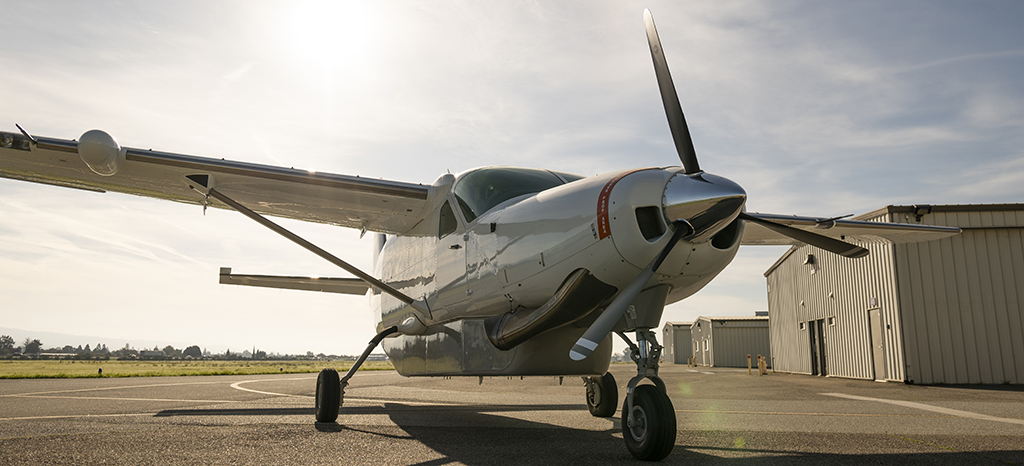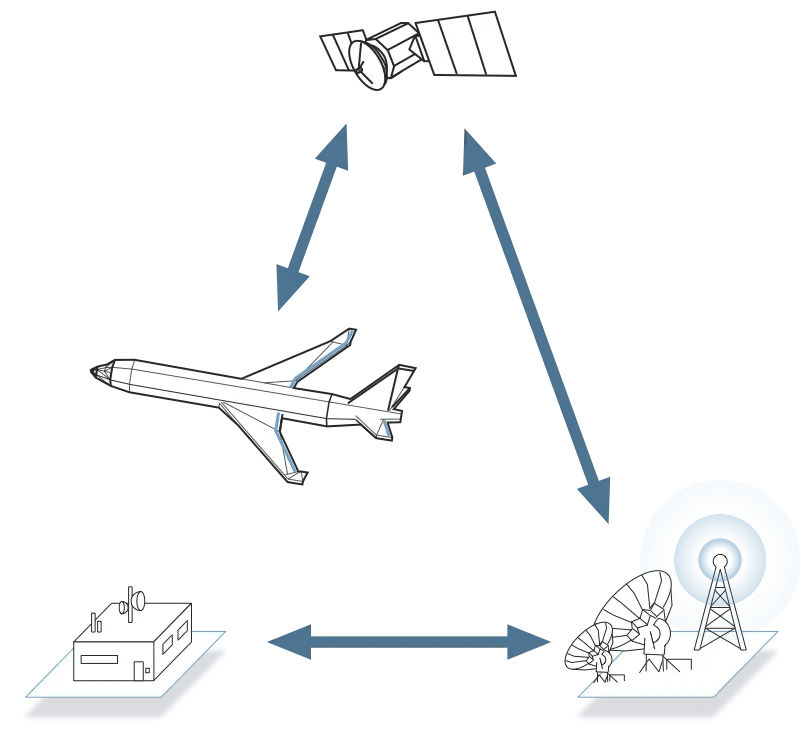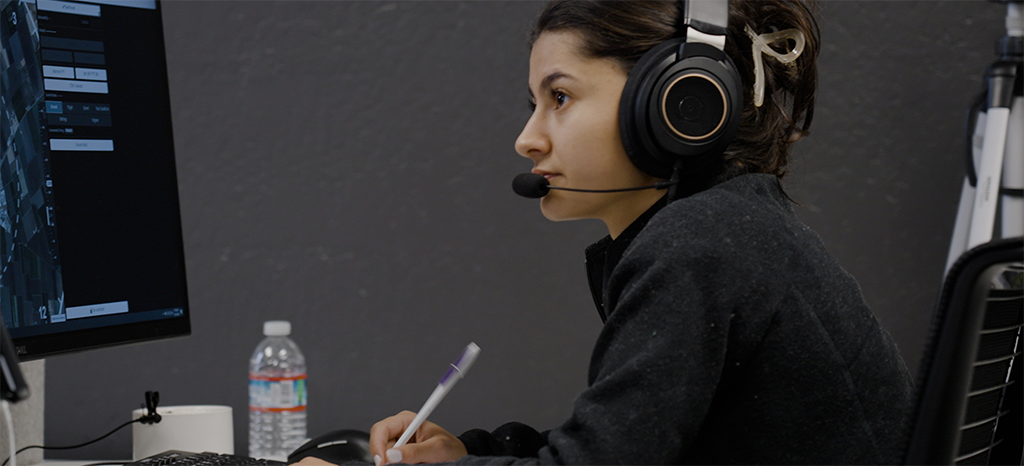This article was originally published in the February 2024 issue of Jetstream.
One of the ways Global Aerospace stays at the forefront of aviation and aerospace insurance is by continually engaging with the companies behind next-generation technological advancements. Based in Silicon Valley, Reliable Robotics is pushing the envelope on autonomy and automation in aviation.

We were pleased to talk with Reliable Robotics Chief Business Officer Myles Goeller about the company’s innovative offerings and how new technology is affecting aviation generally. This article includes highlights from that conversation.
Aviation has used forms of automation for decades now. Do you believe we are on the cusp of transformative change? If so, why now?
Advanced automation in transportation is at an inflection point where technology maturity and societal acceptance is bringing transformative change. Evidence of the latter is the rapid evolution and adoption of advanced safety and driver assist technologies in the automotive sector.
Supporting this change is the maturity of the technology required to fully automate and remotely operate aircraft. Among these technologies are high-integrity navigation systems that enable automated operations without terrestrial navigation aids, as well as autopilots that provide continuous engagement through taxi, takeoff and landing. Additionally, detection and avoidance (DAA) technologies are being developed that enable aircraft separation and collision avoidance, complemented by certified, bi-directional communications for command and control.
These advances are underpinned by air transportation’s highly structured and regulated system that provides the ideal conditions for the development of advanced automation. Both the Federal Aviation Administration (FAA) and the European Union Aviation Safety Agency (EASA) have provided a clear framework for the certification of safe aviation systems and are proving to be supportive partners on the path to automation.
How does your system function in practice? To what extent are there active pilots in the loop?
Reliable Robotics aims to deliver a suite of onboard and offboard hardware and software that enables the remotely piloted operation of aircraft in controlled and uncontrolled airspace.
This falls into two categories:
- Continuous Engagement Autopilot that fully automates control of the aircraft, enabling full flight, gate-to-gate automation.
- Airspace Integration Solution enables remote operation of the aircraft by delivering the rest of the required ecosystem, including DAA systems, communication links and ground control stations (GCS).
Together, they create the system for safe automated flight.
The technology enables the transition of the pilot’s role from the cockpit to the GCS. The remote pilot will not interact with a yoke/stick, rudder and throttle lever to directly manipulate control surfaces. The GCS will enable the remote pilot to meet the operational and functional requirements of instrument flight rules (IFR) operations using the flight management system (FMS) and managing the flight path through a customized panel.
This means that the remote pilot will focus more on managing systems and the flight plan and interacting with air traffic control (ATC)—not flying (i.e., aviating) the aircraft. That said, the remote pilot has final authority and responsibility for the operation and safety of the flight.
Pilots always have been and will remain the cornerstone of aviation safety.
How is automation used in existing air services?
We enjoy an incredibly safe air transportation system today because of a steady stream of incremental safety improvements, including automation, and this will continue with full aircraft automation and remote piloting.
Most passengers are likely unaware of the level of automation that exists today. Systems such as automated flight controls, autopilots and FMS are standard in most modern large commercial aircraft.
Automation and autopilot systems assist the pilot’s control of the vehicle, allowing the pilot to focus on broader aspects of operations (for example, monitoring the trajectory, weather and on-board systems).

C2 Link System (simplified schematic)
Current autopilot technology is, however, typically only used for the cruise portions of flights. Auto-land technology exists but is used in relatively few commercial aviation landings because it requires expensive ground-based instrument landing systems (ILS) infrastructure and has significant limitations. Certain aircraft have emergency auto-land systems if the pilot is incapacitated, but these systems are available for emergency use only.
At Reliable Robotics, we continue advancing aviation safety-enhancing technology.
This will include the use of a continuous engagement autopilot that’s “always on” through all phases of aircraft operation, including taxi, takeoff, en route, approach, landing, taxi to a parking location and engine shutdown. At the same time, we are developing high-integrity navigation systems that enable automated operations without expensive terrestrial navigation aids.
These systems will significantly reduce the occurrence of common causes of fatal aviation accidents, such as controlled flight into terrain and loss of control in flight.
How do you see the evolution of automation being integrated into mainline cargo and passenger services?
The aviation industry will continue to incrementally adopt automation technology that increases safety and efficiency, as it has for the last 100 years.
Within the aviation industry, there are multiple programs focused on incremental automation of aircraft with the goal of reducing crew workload and potentially leading to reduced crew complement. This includes reducing the number of supplemental crew required for long-haul flights and potentially leading to single-pilot operations.
Most industry observers believe that defense and cargo markets will lead the adoption of advanced automation technologies, including reduced crew cockpits and uncrewed aircraft. These markets will help demonstrate the safety case that will be required for passenger operations.

Safety and efficiency are two of the main reasons to adopt automation. Can you describe exactly how they will manifest themselves in practice?
In terms of safety, advanced automation will significantly reduce the occurrence of common causes of fatal aviation accidents, such as controlled flight into terrain, loss of control in flight and runway incursion. High-integrity navigation systems make it possible to safely fly in lower visibility weather conditions without costly ground infrastructure. The “always on” autopilot also enables any aircraft to be remotely piloted with continuous engagement from departure gate to arrival gate.
From an efficiency perspective, advanced automation and remote piloting increase the productivity and efficiency of the two most important resources in aviation: pilots and aircraft. We group this efficiency into four categories.
- Pilots supervising flights remotely from a control center are more productive. They spend less time traveling to and waiting for aircraft, and they can remotely operate aircraft anywhere in an airline’s network. This dramatically simplifies crew pairing and rostering and reduces reserve pilot requirements. We model productivity gains in the amount of flight hours a pilot can operate of up to 50-100% for large commercial airlines and 200%+ for smaller aircraft Part 135 and Part 91 operators.
- More productive pilots will provide the capacity required for the aviation industry to grow. Remotely operated aircraft can be operated “anytime, anywhere” by remote pilots that deliver highly flexible and scalable piloting at lower cost, enabling airlines to deliver more scheduled and on-demand flights and grow their revenue.
- Automated aircraft capture the full potential of optimized flight planning and execution, which lowers fuel consumption (by around 4-6%) and reduces engine wear and resulting maintenance costs.
- While we have not investigated the total weight reduction and increased payload (weight and volume) that a remotely piloted aircraft will enable, removing the requirement for cockpit and crew support systems allows for significant structural weight and volume savings.
Over 400 people die every year in small aircraft in the U.S.
68-71% of these accidents could have been avoided with automatic safety systems.
(FAA, NASA, University of Tulsa 2022-2023)
The perception from many is that you need a pilot in the cockpit to create a feeling of security for passengers. Do you think society will get past that eventually?
We are initially focused on the major aviation markets that do not have passengers, including cargo, defense and special missions and believe that demonstrating the safety of autonomous aircraft in those markets will pave the way for later adoption for passenger operations.
We believe that passengers will see the safety of autonomous aircraft, and more broadly will build their trust in autonomous vehicles on the ground and in the air. As with all advances in technology, we expect there will be early adopters who are more comfortable with changes.
Parting Thoughts From Myles Goeller
At Reliable Robotics, we look forward to this next evolution of advanced automation in aviation.
The technology now exists to improve aviation safety and connect more communities with air service. An autonomous flight system coupled with pilots-in-the-loop will create new opportunities in the future for operators, pilots and the public.
Reliable’s certification plan was accepted earlier this year, demonstrating the FAA’s engagement and dedication to the process of certifying safety-enhancing technologies. Autonomy can and will be certified in the near term.